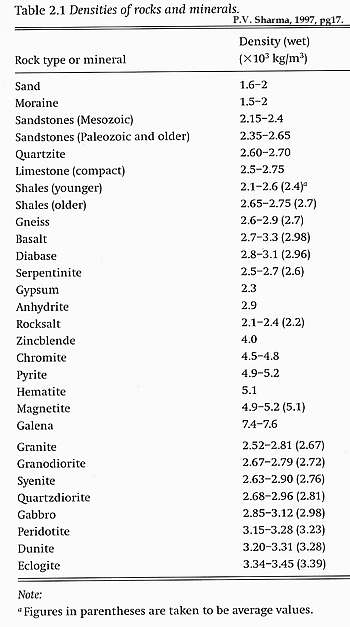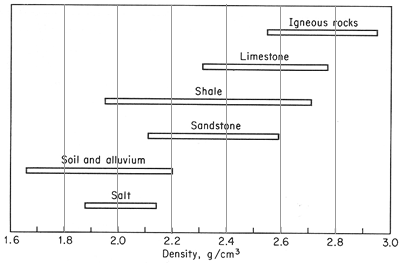How to Find the Density of a Rock
What we are actually comparing is the mass per unit volume that is the density. It weights one thousand grams the weight of one litre of water divided by five equals two hundred grams.

Density Of An Irregular Substance Rock Concept Map De 2 Concept Map Teaching Materials Concept
For rocks without sensitive minerals such as smectites the porosity and dry grain and saturated densities can be derived from the saturated mass dry mass and volume or buoyant weight.

. The density of water is approximately 1000 kgm 3 and the density. How To Find The Density Of A SolidThe most accurate way to calculate the density of any solid liquid or gas is to divide its mass in kilograms by its volume length width height in cubic metres. In order to determine these densities we might weigh a cubic centimeter of each sample.
Calculate the sample density ρ S W SV T V P. L S RQD. The unit for density is kgm 3.
Therefore the total length drilled or core recovery is 0619. Divide the rock density by. Share your results with the rest of the class then calculate and record the averages for each specimen.
Calculate the weight of packing material W P W TSP W T W S. These measurements allow calculation of saturated dry and grain density as well as porosity and mineral and pore volume by employing Eqs. Find the mass and volume of your samples then calculate the density D m v Mineralrock 3mass g volume cm3 density gcm Class average density Quartz Calcite Galena Granite Basalt 3.
For calculating density you need mass and volume as density rhomV Mass is easy. L 26 42. This means that our thirty four hundred gram sample represents sixty percent solids forty percent water.
Once you have these two it is a simple matter of dividing the mass of the rock by its volume. ρ is the density. Therefore these numbers translate directly to gcm 3 or tonnes per cubic meter tm 3.
You submerge the rock in a graduated vessel and find the difference between the. Mass density x volume. A way to find the density of a rock is to first of all find its volume then weigh it for its mass.
This isnt as complex as you may think because waters density is 1 gram per cubic centimeter or 1 gcm 3. The way to solve the density equation for mass is to multiply density x volume. How do you find the mass of a rock in water.
1 How do you find the mass of an object in water. This is the amount that the ore displaced. Do the measurement a couple of times to make sure you really did fill all nooks and crannies with the beads the first time.
Mass m kilogram kg gram g milligram mg metric ton t pound lb ounce oz carat ct The density of a material typically denoted using the Greek symbol ρ is defined as its mass per unit volume. Given that the sum of the length of core pieces 10cm is 26 and the rock quality designation is 42. RQD Rock Quality Designation 42.
ρ P is the density of the packing material see below. If the rock sample weighed 271 g and the soil 120 g we could describe the density of the rock as 271 g cm 3 and that of the soil as 120 g cm 3. The densities of rocks and minerals are normally expressed as specific gravity which is the density of the rock relative to the density of water.
M is the mass. Divide the mass of the rock by its volume to calculate the density of the rock. In our example the density is 2048 255 gcubic cm.
S Sum of the Length of Core Pieces 10cm 26. How to measure Specific Gravity of minerals and rocks. Calculate the volume of packing V P W P ρ P.
To find the volume you can take a water container that has measurements on its side and put some water into it enough to cover the rock if you were. Volume of an irregural piece of rock can be found by submersion. You can use the density equation to calculate mass if you know the density and volume of a substance.

How To Find And Determine The Specific Gravity Of A Rock Gravity Rock Geology Rocks

No comments for "How to Find the Density of a Rock"
Post a Comment